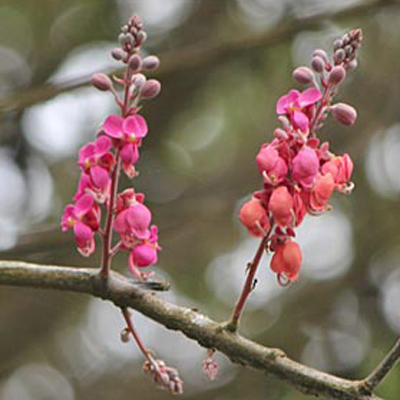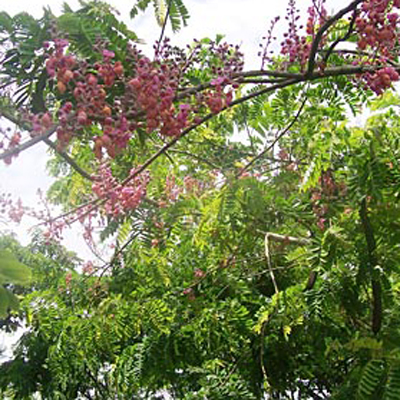Pink Cassia (Cassia grandis) 5 seeds
Common name: Cassia grandis, Pink Cassia, Pink Shower Tree
Native to Mexico and the Caribbean, it is a deciduous or semi-evergreen tree. It has smooth greyish bark and irregularly growing branches. Leaves are winged and clustered, consisting of 3-8 pairs of leaves. The flowers are pink, very fragrant, in summer they appear in drooping clusters....
Long description
| HUF 2,435 * (nettó: HUF 1,917) | |
Shipping
face
Personal receipt of goods:
Akár a mai napon
info
Akár még a mai napon. A rendelés leadása után összekészítjük a csomagot, majd sms - ben vagy e - mailen értesítjük, hogy a termékek átvehetőek (Gazdabolt_2 üzletünkben, hétfőtől - péntekig 8:00 - 17:00 óra között).
By courier:
1-5 nap
info
A rendelés leadása után a futárszolgálat 1-7 munkanap alatt szállítja ki a csomagot, melyről e-mailben értesítjük.
Common name: Cassia grandis, Pink Cassia, Pink Shower Tree
Native to Mexico and the Caribbean, it is a deciduous or semi-evergreen tree. It has smooth greyish bark and irregularly growing branches. Leaves are winged and clustered, consisting of 3-8 pairs of leaves. The flowers are pink, very fragrant, in summer they appear in drooping clusters. The fruit is dark brown. The tree is used in a variety of applications.
CASSIA
Cassia
This genus, which belongs to the buttercup family, was once very large, comprising perennial and annual herbaceous plants as well as half-shrubs, shrubs and trees.
There are now over 100 species. Native to tropical climates, it includes mostly evergreen shrub or tree species. Its wing-like compound leaves are often hairy. Their bright yellow or pink flowers open singly or in small clusters, in clusters of spikes. After a long time they bloom, and the flowers develop into pod-like pods.
Cultivation:
Some tolerate repeated frosts well. They require well-drained soil and a sunny or semi-shady position. They can be propagated by sowing.
Native to Mexico and the Caribbean, it is a deciduous or semi-evergreen tree. It has smooth greyish bark and irregularly growing branches. Leaves are winged and clustered, consisting of 3-8 pairs of leaves. The flowers are pink, very fragrant, in summer they appear in drooping clusters. The fruit is dark brown. The tree is used in a variety of applications.
CASSIA
Cassia
This genus, which belongs to the buttercup family, was once very large, comprising perennial and annual herbaceous plants as well as half-shrubs, shrubs and trees.
There are now over 100 species. Native to tropical climates, it includes mostly evergreen shrub or tree species. Its wing-like compound leaves are often hairy. Their bright yellow or pink flowers open singly or in small clusters, in clusters of spikes. After a long time they bloom, and the flowers develop into pod-like pods.
Cultivation:
Some tolerate repeated frosts well. They require well-drained soil and a sunny or semi-shady position. They can be propagated by sowing.
| Weight: | 0.025 kg |
|---|---|
| Width: | 3 mm |
| Height: | 100 mm |
| Length: | 150 mm |
| Aviability: | 1-4 nap |
| Basic sales unit: | db |
Login
Login or registration with a social account
Login
Login or registration with a social account

